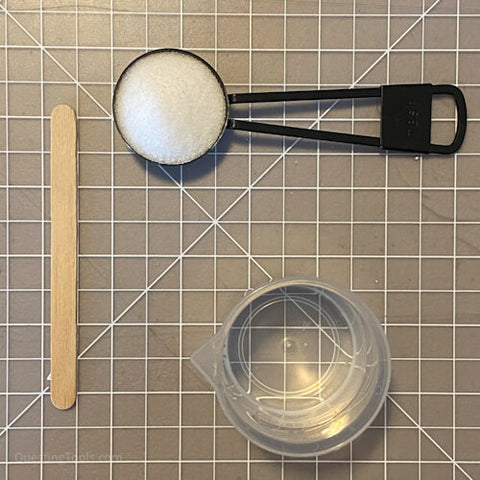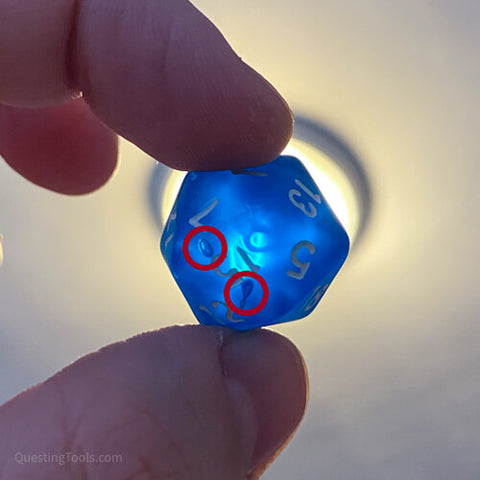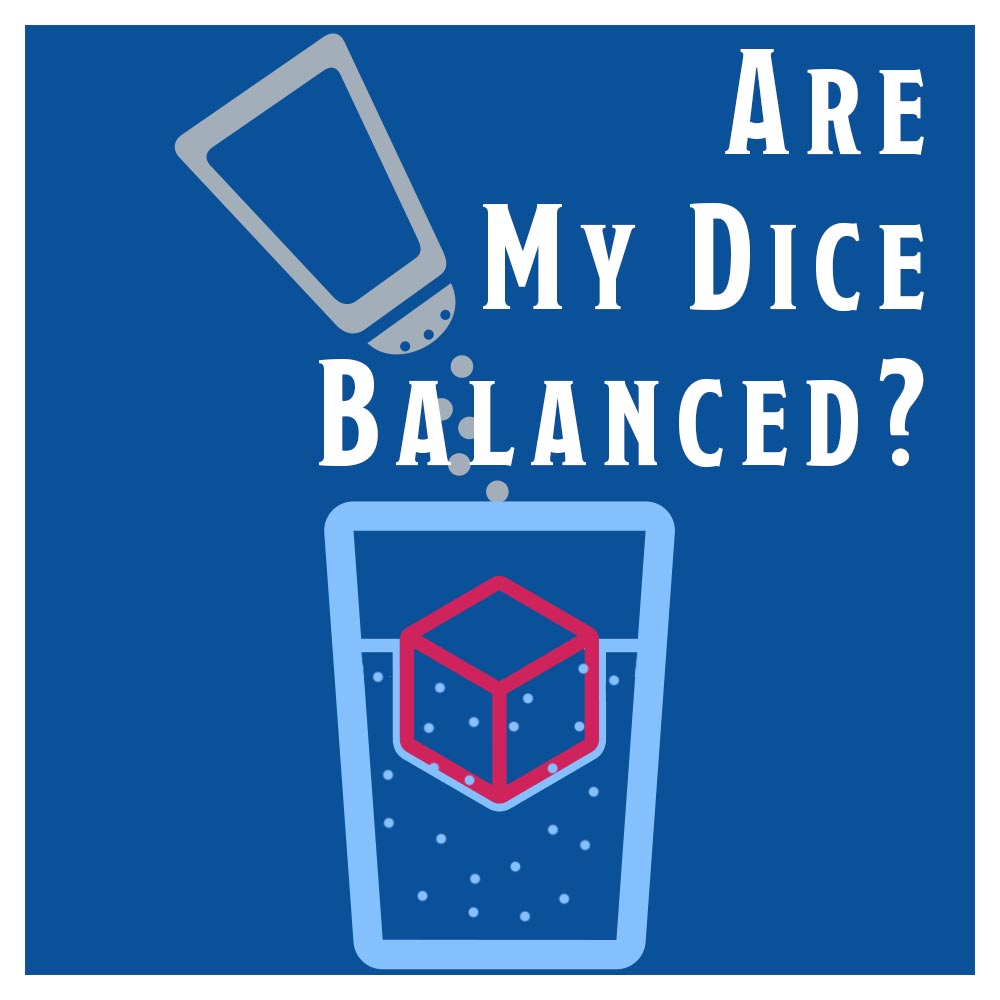Whether you’re deep in an adventure or barely staying alive, the results of your dice are critical. Thus, having well-balanced dice is the key to success! So, today we are going to learn how to test our dice for balance.
Now your first question may be, why would my dice be unbalanced? And, the simple answer is that during the creation of the dice, there may be small flaws that make it into the form of a die. These flaws are also called biases. A bias may cause a die to favor one or more faces, which would mean that your die is not dealing random acts of fate as the click-clack creators intended.
Dice are susceptible to several biases, such as being shaved, having uneven faces, or imperfections inside. Some biases may be applied intentionally, such as shaving, but we are mostly talking about the random imperfections in this article. You can test for a favored side by rolling a die a ton of times, keeping track of each result, and looking for repeats. This can be very time consuming and not the most efficient test to execute.
In this article, however, we will explain in detail how to determine if your dice have any internal imperfections with the saltwater test.
The reason behind the Saltwater Balance Test
The basic idea behind the saltwater test is that a die will float in concentrated saltwater and any biases will become easy to spot. In the test, you put a die in water that has been saturated with salt and the die will float. You can then easily spin the die in the saltwater and any lighter face will quickly and consistently float to the top.
The saltwater balance test was first used to check golf balls for balance. Like dice, golf balls may also have manufacturing flaws. Professional golfers have been using the saltwater and sharpie method for decades to check for unnatural spin or imperfections. Our math rocks get the star-studded treatment thanks to golfers of yorn!
If you are interested in a more in-depth look into the science behind what is happening in the solution, be sure to read, “What Happens When Salt Is Added to Water?”
How to Check the Balance of Acrylic Dice
The following list of materials and instructions will guide you through the process of testing your dice for balance. Before you get started, it must be known that this test will only work for acrylic, resin, and plastic dice.
What do you need for the saltwater test?
- Room temperature water
- Table Salt
- A cup (or a container)
- ⅓ Measuring cup
- 1 Tablespoon
- Mixing stick
- Pen and paper
- The dice you want to test

Preparing the saltwater dice balance test
To make the saltwater for the dice balance test, follow these instructions:
- Add ⅓ cup of water to the cup or container.
- Add three tablespoons of salt to the water. While adding the salt, make sure to stir vigorously.
- Once the three tablespoons of salt have been added and most of the salt has dissolved, place one of your dice into the saltwater solution to test how saturated it is.
- If the die does not float in the saltwater, remove the die, and continue to add salt one tablespoon at a time.
- Once the die is floating, it is time to start the test. Do note that there may be some undissolved salt at the bottom of the container, and that is okay.

The ratio of salt to water is typically 9 tablespoons of salt to 1 cup of room temperature water. However, this will vary depending on the dice being tested. Once your dice float in the saltwater solution, you can begin the test.
Performing the dice balance test

To begin the test, place the die you want to test in the solution and give the die a flick to make it spin in the saltwater. Once it has stopped spinning, record the number that is face-up. Then repeat the flick of the die until you are satisfied that no particular number or set of numbers that appear more commonly than others. The more scientific method is to record each result, but you can most likely skip this step and still feel confident in your test - it should become clear very quickly if there is a favored face.
Reading the results of the balance test
If one number or a set of numbers appears more frequently, your die is most likely unbalanced. This may be a result of the die having imperfections, such as containing air bubbles which cause it to be lighter on one side.
A well-balanced die will give you a variety of numbers facing up. Now, you may get a number showing up once or twice, but as long as it is not the same digit more often than not, you dice should be all good.
Saltwater Dice Balance Test - Good Results
Saltwater Dice Balance Test - Bad Results
Saltwater test limitations
While this is generally an accurate method for testing the balance of a dice, it may not be the best method in some cases. For one, this test will not work on dice that are made of metal, stone, or wood. The metal and stone dice are going to sink to the bottom of your container, no matter how much salt you add. And, wooden dice will float; however, the saltwater will likely negatively affect them.
This method does not reveal external defects that may occur on the outside of the dice.
You should note that different dice have different densities. Meaning that they will take different amounts of salt to float. Bigger dice with larger surface areas tend to float more easily.
Opaque textured dice usually show apparent bias in this method. Textured dice tend to be a lot heavier. They are heavier because they are made from different colored plastics to produce the designs and shapes we see inside some of them. Clear and transparent dice do better.

Determining the accuracy of dice using the saltwater method is an excellent and practical way to test dice. It takes some practice if you want to do it well, but once you’ve done it a few times, you should understand what you are looking for.
On the outward appearance of a die, you will be able to notice if it has been shaved, drilled, or baked. Some of the things to look for include; non-uniform edges, uneven sides, and air bubbles in transparent dice.
What can you do to avoid buying biased dice?
This really is a loaded question! Since there really is no way to tell if you are purchasing unbiased dice or not, without testing them. However, if you are really concerned, getting purely translucent dice will be your best bet.

The reason for getting translucent dice is that you’ll be able to see any imperfections with the naked eye. Additionally, they are usually made with high-quality plastic, which forms the uniform surface.
Final Thoughts
I hope that by reading this article, you have learned something about testing your dice for biases. I have always found this test to be very helpful and even soothing to do.
Please, do let us know if you have done this test before, and what it revealed. As well as if we missed anything.
Until next time, happy questing!

